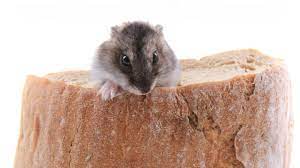Dock, a common plant found all over the world, is a member of the Rumex genus. It is distinguished by its distinctive lance-shaped leaves and thrives in meadows, gardens, and along roadsides. Dock plants are mostly made up of water and fiber, with very little fat.
Dock's nutritional profile:
Water accounts for approximately 94% of the total.
Approximately 1% fiber
Less than 1% protein
Fat: Insignificant
Dock leaves contain trace amounts of vitamins A and C, as well as calcium and iron.
Dock can hamsters eat?
Dock can hamsters eat? Yes, but it should be done in moderation as part of a varied diet. Dock leaves are generally safe to consume by hamsters, and they may even enjoy nibbling on them on occasion.
Dock can be eaten in moderation by hamsters because it has some nutritional benefits. The leaves are high in fiber, which aids digestion and prevents constipation in hamsters. Furthermore, the small amounts of vitamins and minerals found in Dock leaves can help with overall health.
The Advantages of Feeding Dock to Hamsters
Feeding Dock can provide several advantages to your hamster:
Dock leaves' fiber content can support healthy digestion in hamsters, preventing gastrointestinal issues.
Chewing on Dock leaves can help your hamster's teeth stay in good shape by naturally wearing them down.
Hydration: The high water content of Dock can help your hamster stay hydrated, especially if offered fresh.
While dock is not a superfood for hamsters, it is a healthy addition to their diet.
The dangers of feeding Dock to hamsters
Can Hamsters Consume Dock? Despite its benefits, feeding Dock to hamsters comes with some risks. Some of the compounds in Dock, such as oxalates, can be toxic if consumed in large quantities. Oxalates may contribute to the formation of kidney stones in hamsters, causing physical harm.
Can Hamsters Consume Dock? If hamsters consume too much Dock, they may develop digestive problems such as diarrhea and stomach discomfort. As a result, it's critical to consume Dock in moderation and as part of a well-balanced diet.
Dock Poisoning Symptoms in Hamsters
Dock poisoning in hamsters can cause the following symptoms:
Diarrhea
Vomiting
Appetite loss
Lethargy
Urination difficulties
If you suspect your hamster has consumed too much Dock or is exhibiting these symptoms, you should see a veterinarian right away.
How much Dock can a hamster have?
To avoid overconsumption and potential health issues, limit the amount of Dock in your hamster's diet to no more than 1-2 grams per serving. This amount should be used as a treat rather than a staple food.
Can Hamsters Consume Dock? A Dock-friendly diet should consist primarily of high-quality hamster pellets supplemented with fresh vegetables, fruits, and small amounts of leafy greens such as Dock. Before giving Dock to your hamster, make sure it has been thoroughly washed to remove any pesticides or contaminants.
Supplements and Alternatives
Can Hamsters Consume Dock? While Dock is a nutritious addition to your hamster's diet, it is critical to provide variety. Here are five other leaves that your hamster can safely consume, along with their brief benefits:
Kale leaves - High in vitamin C and beneficial to the immune system.
Spinach leaves - High in iron and beneficial to overall health.
Dandelion leaves - Helps with digestion and contains vitamins A and C.
Parsley leaves are high in vitamin K, which helps with blood clotting.
Carrot tops - High in fiber and beneficial to dental health.
High-quality hamster pellets, fresh vegetables like carrots and broccoli, and occasional treats like small pieces of apple or cucumber are all iconic examples of hamster food.


Post a Comment